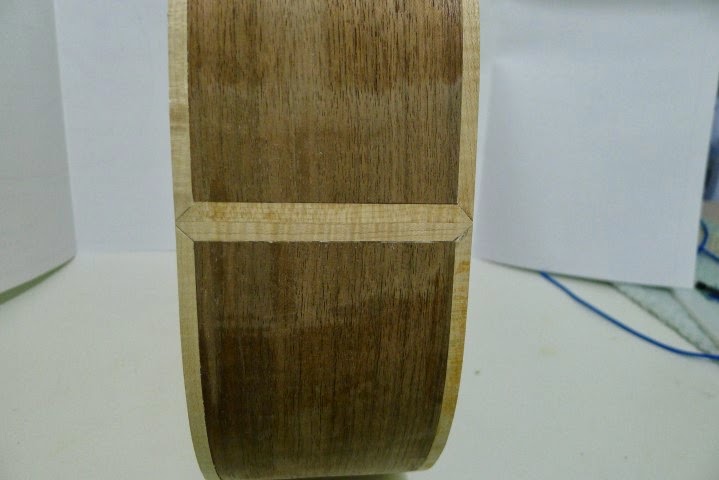One of the slightly less fun days in instrument building.. :-)
I'm just about to carve the top braces of Rick's Tenor so a good time to take a break and sharpen a bunch of tools...
All my favourite chisels including my 3/4" Hirsch crank neck one that is great for brace carving..
I also cleaned up the Stanley Sweetheart Socket chisels and Vertias Bench chisels so those are ready to go for carving the neck. Also for carving the neck, I tuned up my spokeshave so I'm ready when the time comes..
Lastly I have a nice set of detail chisels that frankly were looking like shit so I took some time and did some major work getting them back in shape..
I've tried lots of methods for sharpening, water stones, diamond stones etc but the way I have settled on using most of the time is just varying grits of sandpaper 600, 1000, 2000 and a very fine polishing grit.. just the easiest and quickest way to do this.. My version of the "
scary sharp" system.. It works great and is cheap and quick.. Anyone want to buy some Japanese water stones???
.JPG)
.JPG)
.JPG)
.JPG)
.JPG)
.JPG)
.JPG)
.JPG)
.JPG)
.JPG)
.JPG)
.JPG)
.JPG)
.JPG)
.JPG)
.JPG)
.JPG)
.JPG)
.JPG)
.JPG)
.JPG)
.JPG)
.JPG)
.JPG)
.JPG)
.JPG)
.JPG)
.JPG)
.JPG)
.JPG)

.JPG)
.JPG)
.JPG)
.JPG)
.JPG)
.JPG)
.JPG)
.JPG)
.JPG)
.JPG)
.JPG)
.JPG)
.JPG)





